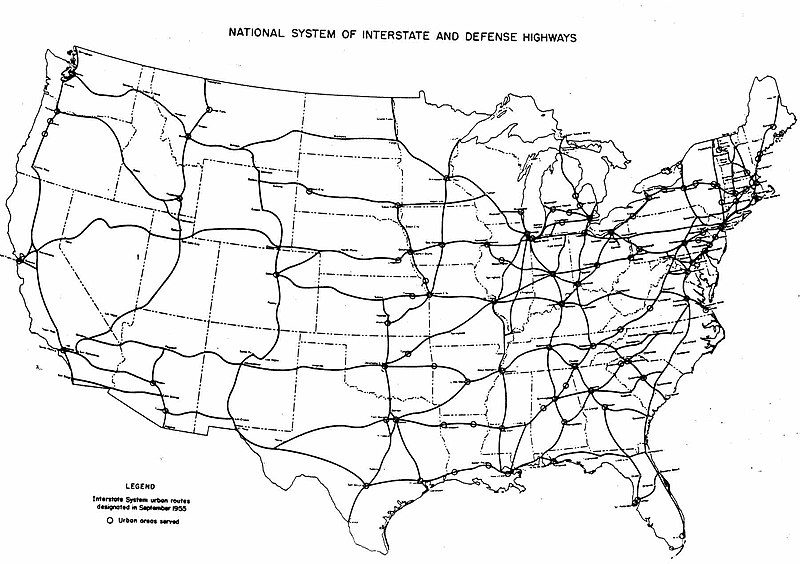High Speed Rail seems to be the latest political sweepstakes – big prizes for those that go after some free money! Yonah Freemark has a nice critique of a recent nationwide high speed rail proposal, coming from a recently formed lobby pushing for a nationally integrated system.
The new association, however, is already pushing an aggressive plan, as illustrated in their proposed network shown above. The proposal would sponsor the construction of 17,000 miles of 220 mph train lines, all electric, to be built out by 2030. The system would reach 44 states and stretch coast-to-coast…
Yet the motivation sustaining the development of a national plan is a good one — I pushed my own serious proposal on this blog earlier this year. Yet I am skeptical of some of the USHSR plan’s provisions. Specifically, I question proponents of high-speed rail routes that traverse empty areas of the country. This proposal’s inclusion of links such as those between Boise and Seattle; Salt Lake City and Sacramento; Denver and Kansas City; and Albuquerque and Dallas — each pair of which is more than 500 miles apart and separated by emptiness– stand out as attempts to make the system seem national without providing adequate justification for how these routes would be economically tenable.
Yonah’s critique is spot on from the perspective of crafting a coherent national rail policy, but I think it misses the political element such a nationwide plan can have. The Interstate Highway System shared at least some qualities with a project like the recently terminated F-22 fighter jet – it has lots of bits and pieces spread across many states, and hence, many constituencies.
Frankly, I find Yonah’s original nationwide proposal to be far more enticing as a matter of policy, too. Still, I think it’s worthwhile to note that this group’s proposal is basically following the same general planning principle of the Interstate Highway System. The system’s Yellow Book plans basically included links between each and every city of medium size in the entire United States.
Rail service alone might be transferable to a nationwide system (despite Amtrak’s financial struggles with the current long-haul routes), but high speed rail (and the expensive tracks it requires) don’t scale in the same way as roadways, obviously. Nevertheless, the political calculus should be similar.
That kind of geopgraphic coverage is politically advantageous. Granted, when the primarly funding mechanism was nationally collected gasoline taxes, such nationwide service then becomes a political necessity. That’s where the high speed rail planning hasn’t yet tackled the key issue. The initial inclusion of $8 billion into the stimulus package set off this planning frenzy, but $8 billion is clearly just a drop in the bucket of what will be required for even a modest network of “high speed” (read: 110 mph) trains.
Speaking of drops in the bucket, the bucket of potential ideas is filling rapidly. Infrastructurist has a whole host of HSR notes last week, including some wonderful renderings of a potential new Anaheim station. This station would serve the current Metrolink commuter trains, future California HSR trains, and even feature an extension of Disneyland’s Monorail to the station (unlike the Disney World monorail that crashed a while back, the Disneyland monorail is more of a ride than a transportation system – which might actually change).

